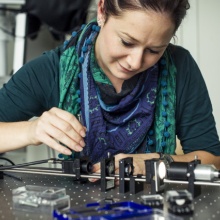Today’s societies critically depend on electronic systems. Past spectacular cyber-attacks have clearly demonstrated the vulnerability of existing systems and the need to prevent such attacks in the future. The majority of available cyber-defenses concentrate on protecting the software part of electronic systems or their communication interfaces. However, manufacturing technology advancements and the increasing hardware complexity provide a large number of challenges so that the focus of attackers has shifted towards the hardware level. We saw already evidence for powerful and successful hardware-level attacks, including Rowhammer, Meltdown and Spectre. These attacks happened on products built using state-of-the-art microelectronic technology, however, we are facing completely new security challenges due to the ongoing transition to radically new types of nano-electronic devices, such as memristors, spintronics, or carbon nanotubes.
The use of such emerging nano-technologies is inevitable to address the key challenges related to energy efficiency, computing power and performance. Therefore, the entire industry, are switching to emerging nano-electronics alongside scaled CMOS technologies in heterogeneous integrated systems. These technologies come with new properties and also facilitate the development of radically different computer architectures. The new technologies and architectures provide new opportunities for achieving security targets, but also raise questions about their vulnerabilities to new types of hardware attacks.
List of all news

Ilia Polian
Prof. Dr. rer. nat. habil.University of Stuttgart




